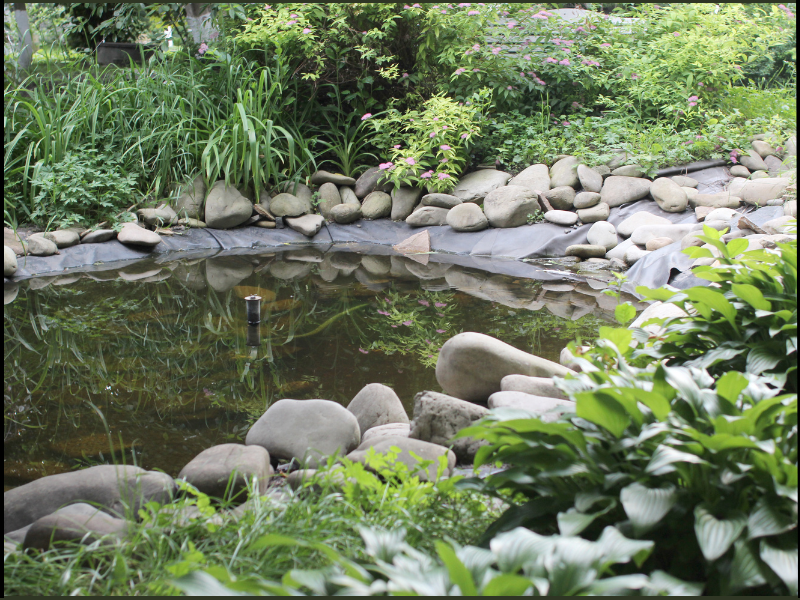Choosing the right pond liner for a garden pond in the UK involves a number of important considerations, including material type, durability, size, and environmental factors.
Here’s a breakdown of pond liner options and some recommendations for a successful garden pond build:
Types of Pond Liners UK
- PVC Liners: Cost-effective and flexible, PVC liners are popular for smaller ponds. They are easy to work with but are not UCV resistant therefore can degrade when exposed to sunlight over time. PVC pond liner material is a good for small size ponds, but should be installed with a protective underlay to prevent punctures.
- EPDM (Ethylene Propylene Diene Monomer), also known as Epalyn pond liners: This type of rubber liner materials are flexible, highly durable, resistant to UV rays, and can withstand harsh temperatures. Epalyn is a popular choice for medium to large size ponds or irregular shapes as it stretches well without cracking.
- Butyl Rubber Liners: Known for durability, butyl rubber pond liners UK are flexible, long-lasting, and more resistant to damage. They’re slightly more expensive but are suitable for larger ponds. In the UK, Butyl has been a favourite due to its durability and weather resistance.
- RPE (Reinforced Polyethylene) Liners: Lightweight and strong, RPE liners are durable and resistant to tears. However, they’re not as flexible as rubber liners, making them less ideal for complex shapes but good for larger ponds with simpler designs.
- Preformed Liners: Preformed fiberglass or plastic liners are rigid and suitable for small to medium-sized ponds with simple shapes. They’re durable and easy to install but limited in customization.
Pond liner size and thickness
- For most garden ponds, a liner thickness of 0.75mm is sufficient. Thicker liners of 1mm are recommended for larger, more elaborate pond designs, box-welded pond liners or where durability is key.
- Choosing the correct pond liner size will save you time and money. You can calculate the required liner size by measuring the maximum width, length, and depth of the pond:
- Maximum Length (L): Measure the longest distance of the pond.
- Maximum Width (W): Measure the widest distance of the pond.
- Maximum Depth (D): Measure from the pond bottom to the highest point of the edge.
Calculate liner length and width:
Liner Length=Pond Length (L)+(2×Depth (D))+Edge Overlap
Liner Width=Pond Width (W)+(2×Depth (D))+Edge Overlap
Edge overlap = Add 30-60 cm (around 12-24 inches) on each side to secure the liner around the pond edges.
If your pond has an irregular shape, measure the longest and widest points. It is best to err on the side of caution and round up to the nearest available liner size. Any extra pond liner can be easily trimmed or tucked under your chosen edging material such as boulders or pebbles used to secure your liner in place.
Protective Underlays
Using an underlay is essential to protect the liner from sharp rocks, roots, and ground movement. Materials like geotextile underlay or sand can be used as a cushion beneath the liner.

Climate Considerations for the UK
The UK’s climate, with cold winters and wet conditions, makes rubber liners (like Epalyn or Butyl) a good choice as they handle temperature fluctuations well. EPDM Epalyn is particularly good for withstanding frost.
Selecting the right pond liner can make a big difference in longevity and ease of maintenance for your garden pond. Epalyn and Butyl rubber liners are often the best options in the UK due to their flexibility and resilience to the climate.





